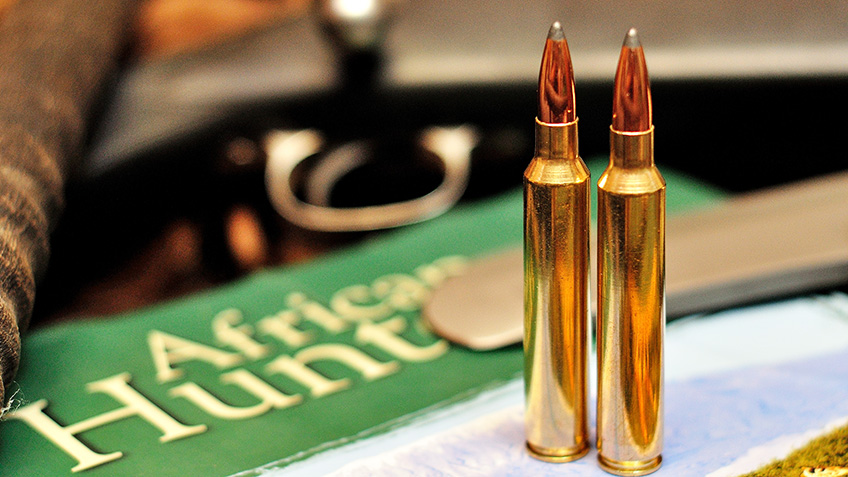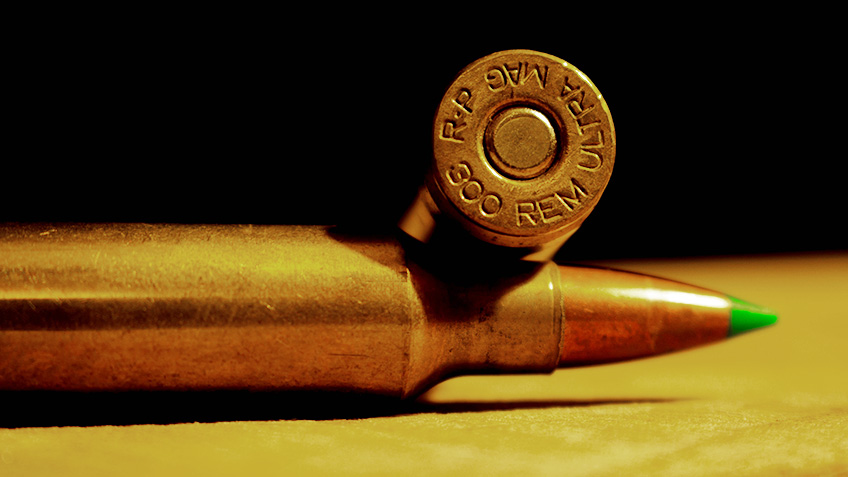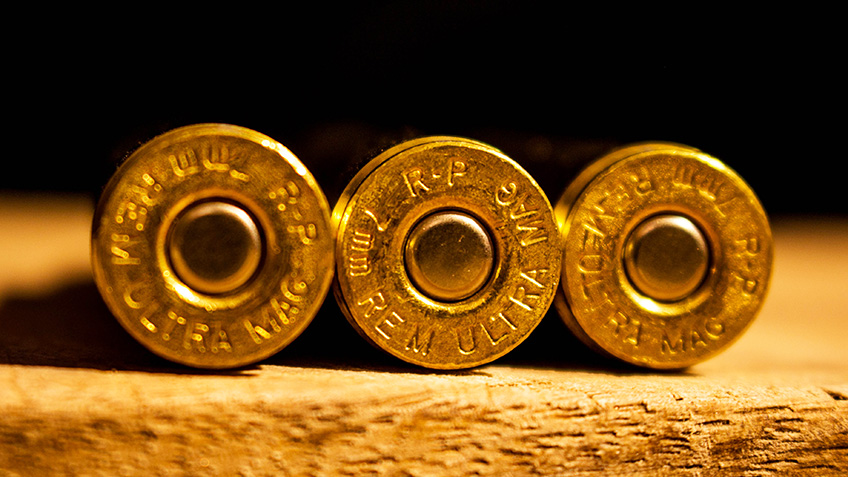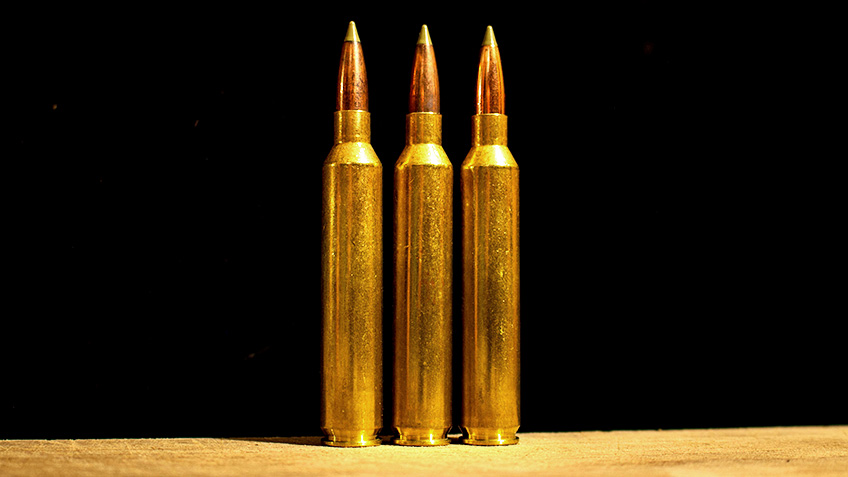“What’s the flattest-shooting .30-caliber available? Those caribou were out there a country mile.” So the inquiry came over the phone after my Dad returned from Quebec, Canada just before the millennium. “Well, the .30-378 Weatherby Magnum is probably the fastest, and therefore the flattest, but you’re cheap and Weatherbys aren’t,” I replied.
“You’re right on both counts. Next?”
“The new .300 Remington Ultra Magnum is very close, probably within 50 fps or so. And Savage is chambering for it now.”
“I’ll order one tomorrow.”

The rifle came, as did a couple hundred pieces of new brass, a set of RCBS dies and some Sierra 180-grain projectiles. All were left on my desk for assembly, and so began my experience with Remington’s Ultra Magnum (RUM) series of cartridges.
Nearly all the cartridges of the 20th Century which had “magnum” in their name were based on the .375 H&H Magnum design, whether they were shortened, necked up, necked down, blown out or any combination thereof. From 6mm to .475-inch, that belted Holland & Holland design got quite the workout, and certainly gave us many of the designs which we still hold dear. But, the case does have its drawbacks, namely the stretching of the case body just ahead of the belt, and at the turn of the last century there were a good number of beltless designs based on the .404 Jeffery: a rimmed case from the first decade of the 20th Century, and a good choice for all dangerous game. The Jeffery has a gentle, 8˚-20ʹ shoulder, which is rather slight for a beltless case that headspaces off the shoulder, but it shoots wonderfully.
Wildcatters tinkering with the case invariably increased the shoulder angle, with the Remington Ultra Magnum series using the 2.85-inch length of the H&H Magnum (to fit properly in existing magazine boxes), a shoulder angle of 30˚, and with the rim turned down to be much closer to the H&H rim diameter (presumably to minimize manufacturing costs). Much of the .404 Jeffery’s taper was removed, to allow for maximum case capacity, and the .300 RUM certainly has that.

My initial loads for Dad’s .300 RUM were built around 165-, 180- and 200-grain boattail bullets, but I found the best accuracy (with groups averaging around ¾-MOA) from the Sierra 180-grain flat base GameKing bullet over Alliant’s Reloder 25, at 3360 fps. This is at least 300 fps faster than the classic .300 Winchester Magnum, and about 150 fps faster than the .300 Weatherby Magnum. As most of his hunting is done inside of 350 yards (considered the aforementioned country mile) there wasn’t a huge handicap with the flat based bullet, though I eventually had customers who wanted their handloads to use a bullet with a better B.C. value. With a powder charge of just over 95 grains of that slow-burning RL25, the .300 RUM shoots flat, hits hard, and makes an awful lot of noise.

Three years after, in 2002, Remington introduced the second in the series, the 7mm RUM. It is simply the .300 RUM necked down from .308-inch to .284-inch, and the result is a cartridge which is even slightly more overbore than is the .300 RUM. The 7mm RUM drives a 150-grain bullet to 3150 fps, or about 100 fps faster than the 7mm Remington Magnum. While the gains are there, they are small—especially in comparison to the .300 RUM over the .300 Winchester—and when you consider the manner in which both of these cartridges will treat the throat of your barrel, it is the opinion of this author that the 7mm RUM perhaps isn’t worth it.
Americans have always been—and probably always will be—enamored with speed; and the RUM series probably represents the most speed we will see from commercial cartridges. With the latest craze of what I call the ‘revisionist’ cartridges—designs like the Creedmoors and the .224 Valkyrie, which rely on bullet conformation rather than velocity—the side effects like throat erosion, barrel wear, excessive recoil and muzzle blast are undesirable. I also feel that in their respective bore diameters, the velocity of the 7mm Remington Magnum and .300 Winchester Magnum are really all a hunter needs for the game animals for which those bore diameters/bullet weights are properly suited. Simply put, if those two cartridges don’t seem sufficient, I feel a larger diameter bullet of greater weight is warranted, instead of a velocity increase.

In the comparison of these two cartridges, I definitely give the nod to the .300 RUM, as it does give the velocities this line was intended to give, though it still represents an overbore design, which has a short barrel life. I cannot say that either of the two cartridges suffers in the accuracy department—quite to the contrary, I’ve found both to be pleasantly accurate—but if you’re the kind of hunter who likes to practice often with your rifle, the RUM series may be too hot for the barrel. If re-barreling a gun doesn’t pose an issue to you, and you enjoy this performance level, then go for it. If you are the kind of hunter who envisions keeping a rifle for the rest of your life, I’d suggest a milder cartridge. If you like burning a whole bunch of powder and making a heck of a lot of noise, the Ultra Magnums are an excellent means of doing just that.
Looking for previous installments of our “Head to Head” series? Click here.











































